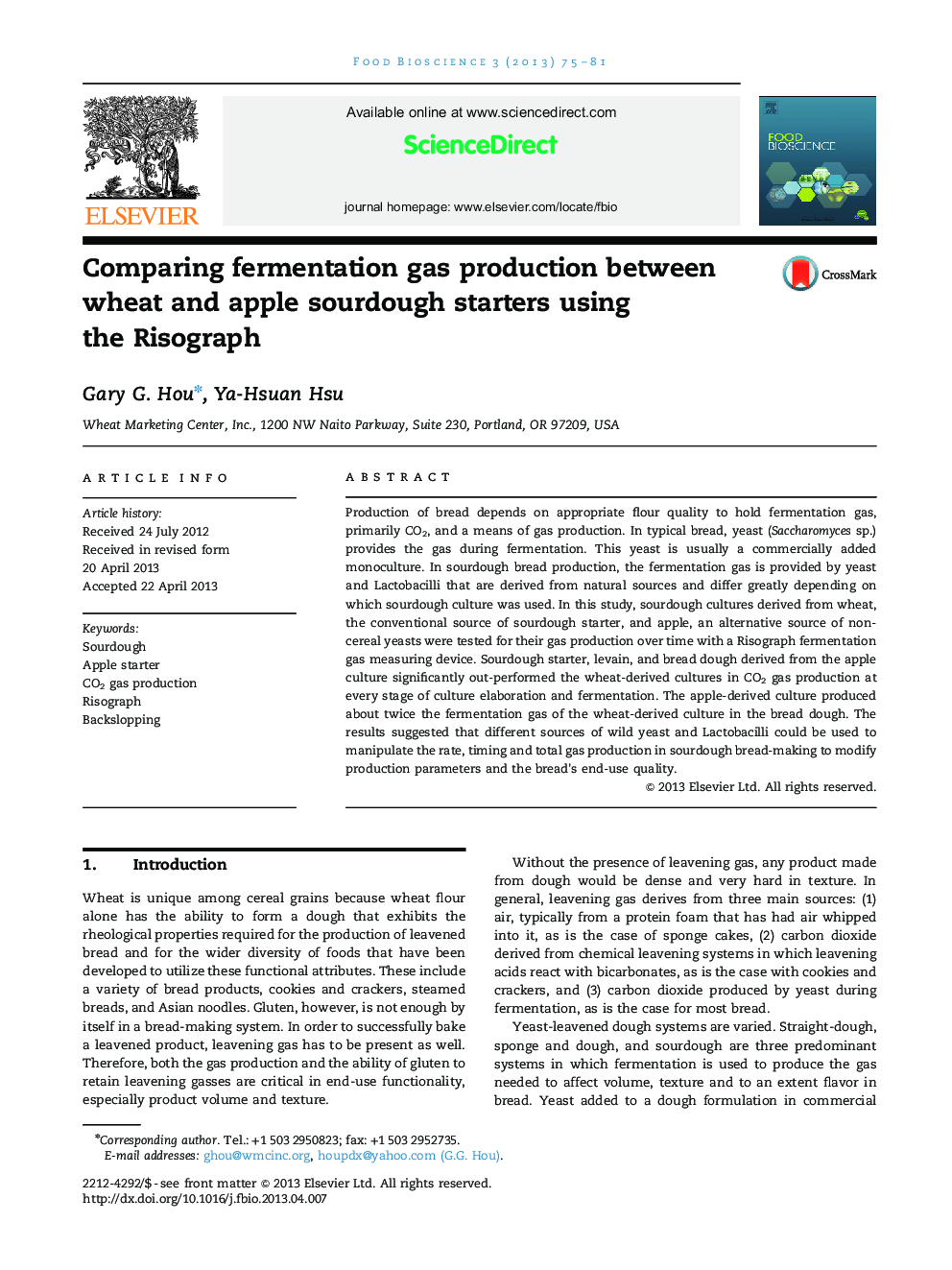| Article ID | Journal | Published Year | Pages | File Type |
|---|---|---|---|---|
| 19721 | Food Bioscience | 2013 | 7 Pages |
•Apple culture produced much more CO2 than wheat culture at elaboration stages.•Apple starter showed more stable CO2 gas production during backslopping.•Apple levain exhibited much higher gas production rate and fermentation power.•Apple sourdough produced 130% more gas than wheat sourdough.•Risograph can be effectively used to monitor gas production in sourdough process.
Production of bread depends on appropriate flour quality to hold fermentation gas, primarily CO2, and a means of gas production. In typical bread, yeast (Saccharomyces sp.) provides the gas during fermentation. This yeast is usually a commercially added monoculture. In sourdough bread production, the fermentation gas is provided by yeast and Lactobacilli that are derived from natural sources and differ greatly depending on which sourdough culture was used. In this study, sourdough cultures derived from wheat, the conventional source of sourdough starter, and apple, an alternative source of non-cereal yeasts were tested for their gas production over time with a Risograph fermentation gas measuring device. Sourdough starter, levain, and bread dough derived from the apple culture significantly out-performed the wheat-derived cultures in CO2 gas production at every stage of culture elaboration and fermentation. The apple-derived culture produced about twice the fermentation gas of the wheat-derived culture in the bread dough. The results suggested that different sources of wild yeast and Lactobacilli could be used to manipulate the rate, timing and total gas production in sourdough bread-making to modify production parameters and the bread's end-use quality.
